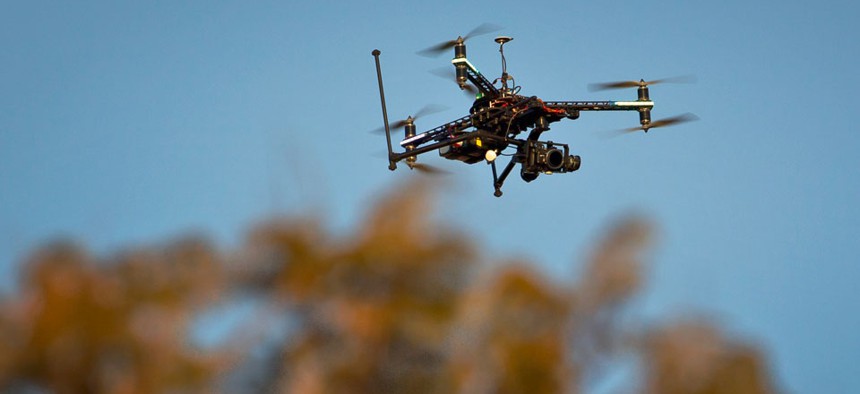Making the Case That Africa Needs Drones More Than Roads

A drone fitted with a camera flies in South Africa. Ben Curtis/AP
The Flying Donkey Challenge will support the development of drones that can be used to carry goods to market and deliver medication to remote villages.
Could African countries with poor road infrastructure leapfrog right from donkeys to drones? They can and should, according to the man behind the Flying Donkey Challenge. The competition will support the development of drones that can be used to carry goods to market and deliver medication to remote villages. The goal is to have drones as affordable as motorbikes flying around the continent within a decade. The first leg of the challenge is now under way: Thirty-three teams from around the world have applied to take part in the first competition in November 2014.
“We feel that if drones are going to be used to transport goods, the most logical place is Africa,” Simon Johnson, director of the Flying Donkey Challenge, told Quartz. “Not for humanitarian reasons. We’re not doing this because we feel bad for Africa. It’s just the perfect place to start. The fact is, there’s incredible growth happening there, but not a lot of infrastructure. Roads just can’t be built fast enough. So why not use flying robots instead?” Once developed, he says, he hopes the drones can be exported elsewhere, creating a new industry for the first countries to adopt their use. If a remote farm in Kenya can send fresh goods out on a drone, he says, a remote farm in the US could do the same.
Johnson hopes that Africa will embrace drones the way it did mobile payments. In the US and Europe, there are large financial institutions already in place that handle payments—and they wouldn’t allow a mobile alternative to replace them without a fight. “It’s a great idea,” Johnson says, “but you have existing businesses—banks—that won’t allow it. Africa was able to leapfrog that, because there was a demand and no provider. This is the same idea.” It’s his hope that the continent can skip right over using cars and trucks to deliver goods, and favor unmanned aerial vehicles instead.
The 2014 competition will consist of three challenges: Precision takeoff and landing using a remote, navigation without GPS, and sense and avoid—where drones will fly a kilometer and back, avoiding balloons along the way. Johnson says that future competitions will demand more sophisticated designs. But teams are welcome to compete with any type of flying robot, as long as the materials cost less than $500. And while some teams aren’t based in Africa, the rules state that all must collaborate with an African institute, school, or lab.
The first round of challenges will take place in Kenya—Mount Kenya represents a particularly good obstacle to practice navigation with, and separates areas that could do lots of trade with the right infrastructure—but Johnson hopes to spread around the continent in the future. “We want the whole continent involved and interested, because lots of countries stand to benefit,” Johnson says. “We don’t know if anyone will be ready to complete the first full challenge when we hold it in 2018. But as long as we’re learning something, it doesn’t matter.”
Reprinted with permission from Quartz. The original story can be found here.
NEXT STORY: NGA: Seeking full immersion in geospatial data


